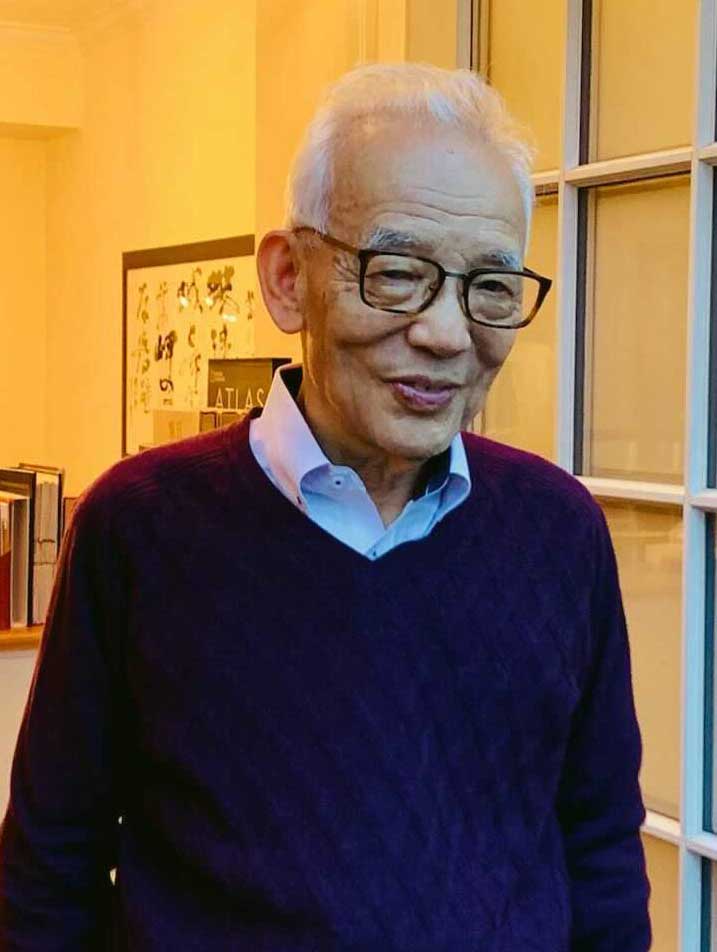October 5th, 2021
Today, Syukuro “Suki” Manabe, 90, was named among the winners of the 2021 Nobel Prize in Physics for his groundbreaking climate science achievements. His pioneering research in the 1960s laid the foundation for how scientists perceive the Earth’s climate and how human actions continue to influence it. Starting in the 1960s, Manabe, a senior meteorologist in Atmospheric and Oceanic Sciences (AOS) based at Princeton University, developed the first three-dimensional models of the atmosphere while working at NOAA‘s Geophysical Fluid Dynamics Laboratory (GFDL) along with founding director Joseph Smagorinsky.
Their research went on to predict what would happen to the globe as carbon dioxide built up in the atmosphere.
Manabe shares the Nobel Prize in physics this year with fellow climate scientist Klaus Hasselmann of the Max Planck Institute for Meteorology, Hamburg, Germany; and Giorgio Parisi of the Sapienza University of Rome, Italy. The decades of combined work by Manabe and Hasselmann presented the first physical modeling of Earth’s climate, which reliably predicted global warming. Parisi’s work revealed “the interplay of disorder and fluctuations in physical systems from atomic to planetary scales,” according to the Nobel Prize press release.
Manabe remains active today as a NOAA affiliate at Princeton University’s Forrestal campus.
“The timing of this award couldn’t be better as world leaders head to the 26th UN Climate Change Conference meeting, armed with the most recent update of climate science to underpin their commitments,” said Ko Barrett, NOAA Research Senior Advisor for Climate. “Society owes a debt of gratitude to Professors Manabe and Hasselmann for their fundamental discoveries about the climate system that have spurred 50 years of research and understanding about this existential threat. And at NOAA, we are forever grateful for all that Professor Manabe contributed to climate science at NOAA and helped mentor the new generation of climate scientists. ”
According to the Nobel committee, scientists had shown for decades how carbon dioxide traps heat, but Manabe’s work put specifics and prediction into that general knowledge. It allowed scientists to eventually show how climate change will worsen and how fast depending on how much carbon pollution is released.
GFDL Director V. “Ram” Ramaswamy said much of Manabe’s historic work took place while associated with the NOAA lab at Princeton. In a combined statement with Stephan Fueglistaler, director of Atmospheric and Oceanic Sciences (AOS) and NOAA’s Cooperative Institute for Modeling the Earth System (CIMES), the two celebrated Manabe’s achievements.
“We congratulate and applaud Suki for being awarded the extremely high honor of the 2021 Nobel Prize in Physics,” according to their statement. “Suki is a remarkable pioneer in the development and application of computational models to understand climate and climate change. His research has been central to explaining the changes in climate due to increases in greenhouse gases. His modeling and science have enabled the construct of the Paris Agreement on climate, with his numerical models proving remarkably prescient in the prediction of the patterns of climate change.”
In a Nobel Prize press release, the award committee praised how Manabe demonstrated to the world how increased levels of carbon dioxide in the atmosphere lead to increased temperatures at the surface of the Earth.
“In the 1960s, he led the development of physical models of the Earth’s climate and was the first person to explore the interaction between radiation balance and the vertical transport of air masses. His work laid the foundation for the development of current climate models,” the release states.
Born in 1931, Manabe received a doctorate from the University of Tokyo in 1958 and went to the United States to work at the General Circulation Research Section of the U.S. Weather Bureau, now GFDL, continuing until 1997. He worked until 2001 at the Frontier Research System for Global Change in Japan serving as director of the Global Warming Research Division. In 2002, he returned to the United States as a visiting research collaborator in the collaborative GFDL – Princeton AOS program.

Highlights of Manabe’s Career at GFDL
- 1958-1963: Research Meteorologist, General Circulation Research Section, U.S. Weather Bureau
- 1963-1997: Senior Research Meteorologist, Geophysical Fluid Dynamics Laboratory, NOAA
- 1968-1997: Lecturer with Rank of Professor, Program in Atmospheric & Oceanic Sciences, Princeton University
- 1967: Meisinger Award, American Meteorological Society
- 1967: Fellow, American Geophysical Union
- 1987: Second Half Century Award, American Meteorological Society
- 1990: Member, U.S. National Academy of Sciences
- 1992: Rossby Medal, American Meteorological Society
- 1993: Revelle Medal, American Geophysical Union
- 1992: First recipient of Blue Planet Prize, Asahi Glass Foundation
- 1997: Honorary Member, American Meteorological Society
- 1997: Fellow, American Association for the Advancement of Science
- 1997: Volvo Environment Prize, Volvo Environment Prize Foundation
- 1997: Minister’s Award, Japan Ministry of Environment


